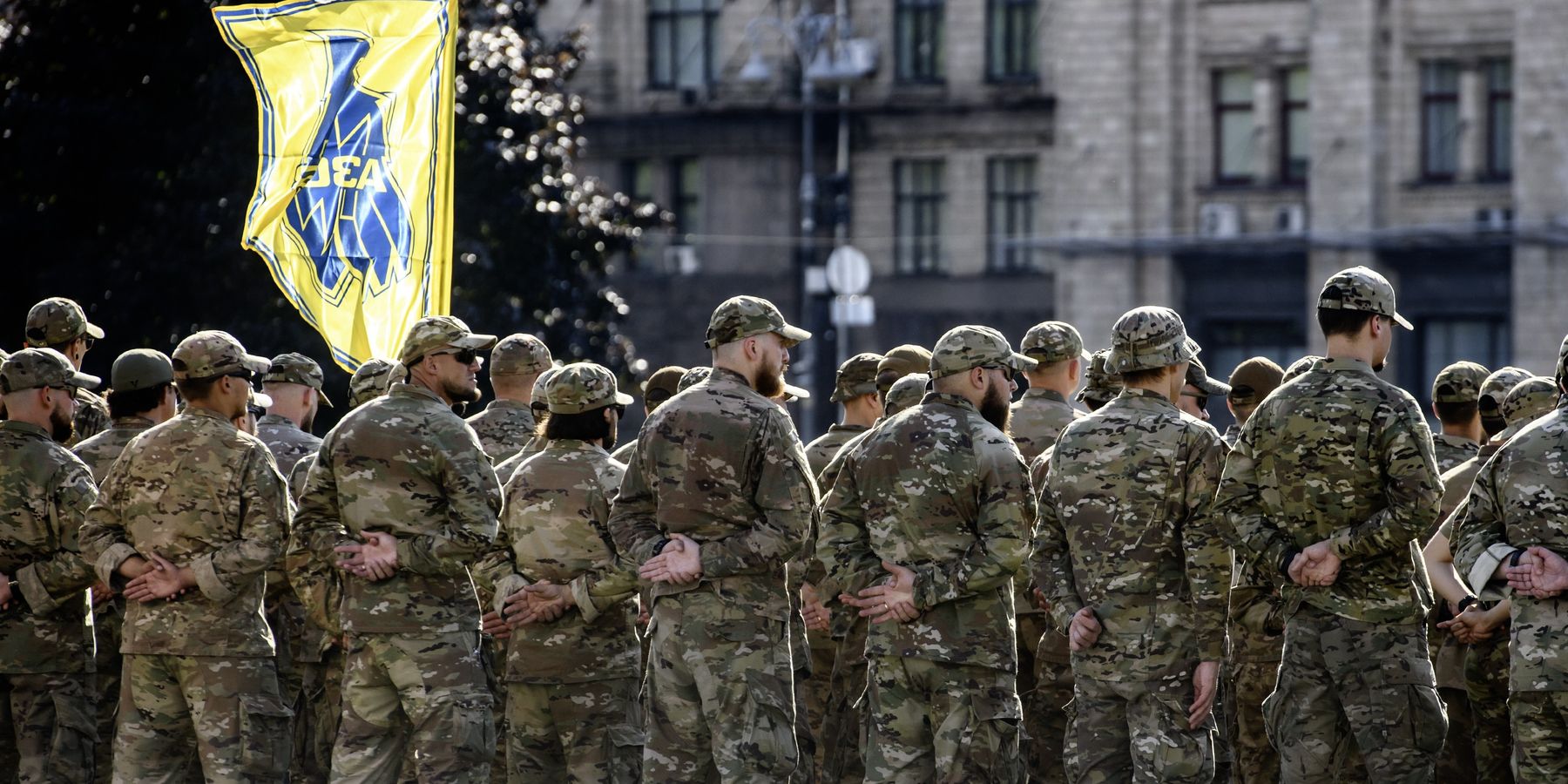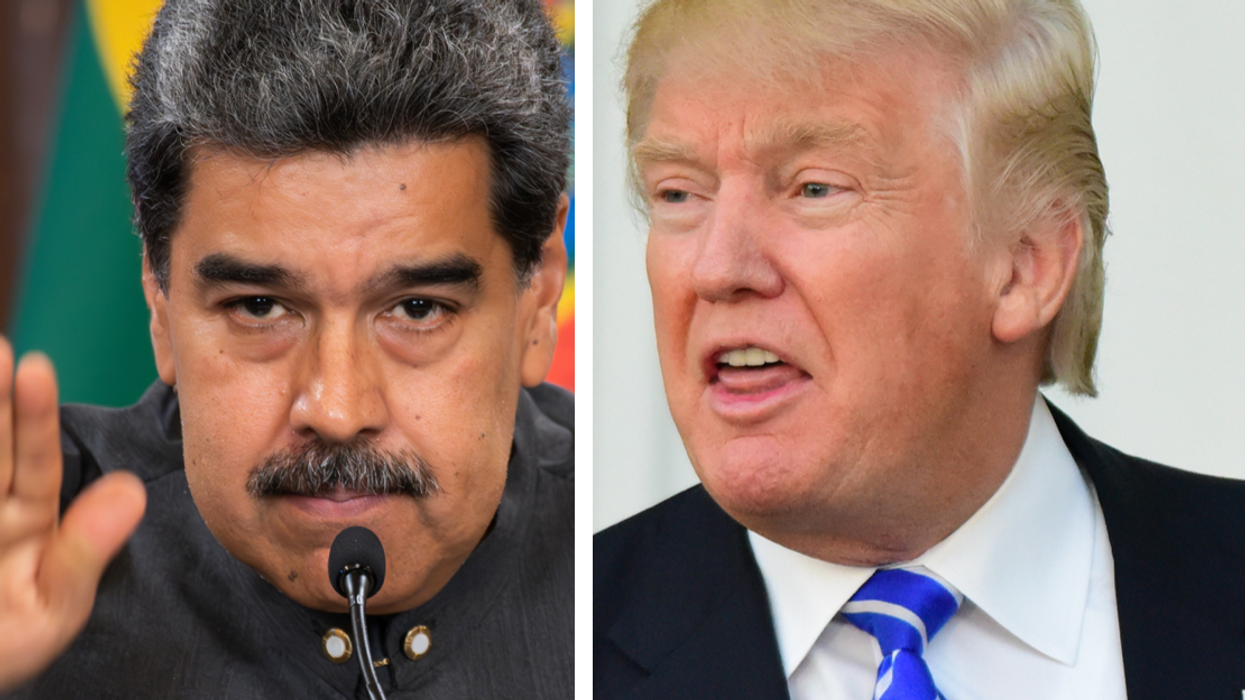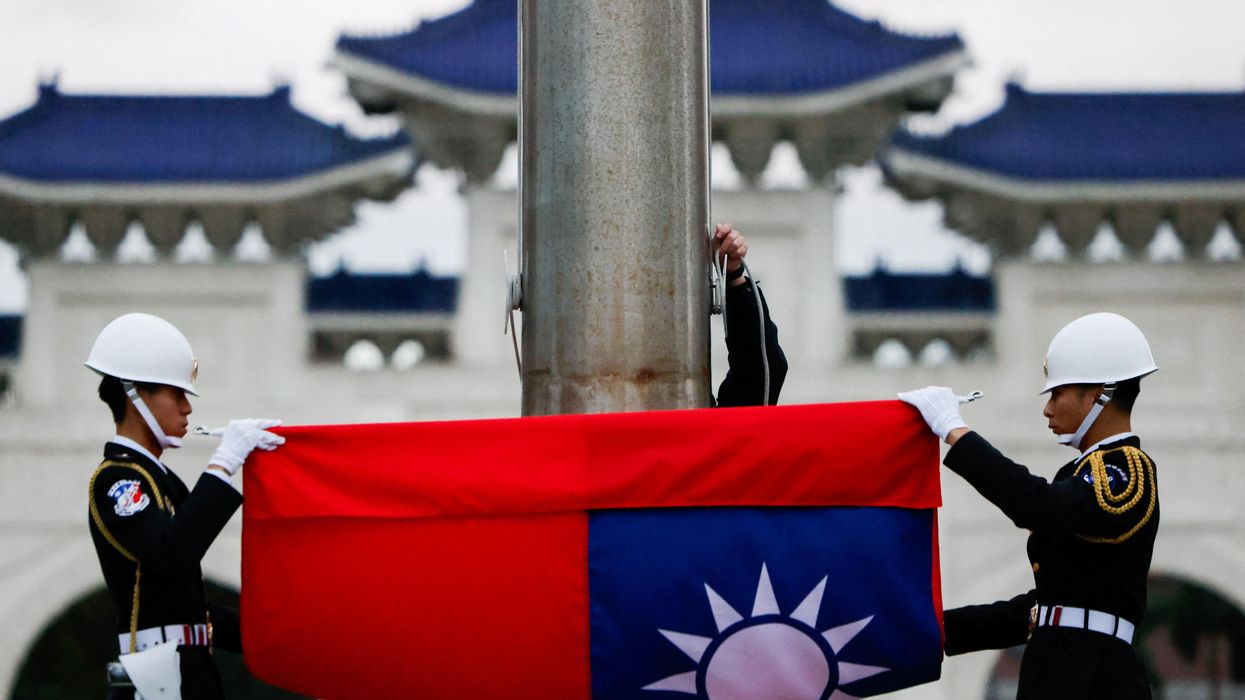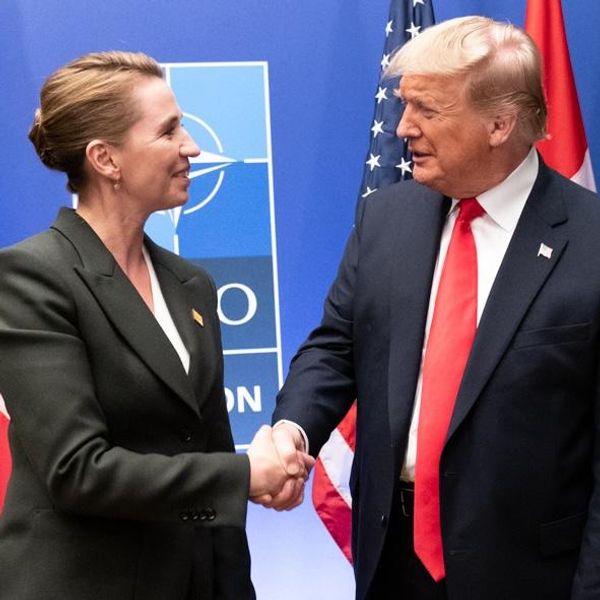Over the last several weeks, Russia’s 51st Combined Arms Army has achieved a penetration of the Ukrainian defenses northeast of Pokrovsk, seeking to isolate the Ukrainian forces defending the city.
To seal off the penetration, Ukrainian forces committed a large number of formations, spearheaded by the 1st “Azov” National Guard Corps.
While the results of fighting are still uncertain at the time of this writing, the presence of an entire “Azov” Corps and its sister Corps in the regular army has come as a surprise to many observers. Most remember it as a single regiment of about 1000 men and are shocked to find it has grown into two multi-brigade structures of over 20,000-40,000 soldiers each. The growth and far-right leaning of this formation could have an impact on the future of any Ukraine peace deal.
The Azov militia battalion was founded by Andriy Biletskyi, whom many have accused of harboring white supremacists views. At one point it was prohibited from receiving U.S. aid by Congress for its extremist views, The unit earned a reputation for battlefield success for its capture of Mariupol (on the Sea of Azov, from which it takes its name) in early 2014 from Donbas separatists.
Ironically, at the time its reputation may have been exaggerated. There are few videos of actual combat and the unit’s first fatality came a month later during battle for Marinka. This may have been the result of an excellent public relations program that Azov established early on.
Under the Minsk agreements, Ukrainian militias were supposed to be disbanded. Instead, in 2015, Ukraine folded them into the National Guard structure. This was intended to professionalize the militias and remove the extremist ideology from the ranks. It's difficult to assess how well the later plan worked since most of the officers together with rank and files were retained. Military professionalism and radical ideologies are not mutually exclusive, as the Waffen SS, from which Azov has drawn its symbology, demonstrated in World War II.
It is also worth noting that Ukraine fields two armies. One under the Ministry of Defense and the second one in the Ministry of Interior, which is closer to the U.S. Department of Justice, aimed at enforcing domestic laws rather than external defense. This second army is called the National Guard. These troops have nothing in common with the U.S. National Guard, run by state governments and federalized as needed, instead these are regular combat units that answer to the Minister of Interior instead of Defense.
Since the Russian invasion in 2022, Azov has fought with professionalism and great courage in multiple theaters. It started out in Mariupol, together with the 35th Marine Brigade defending the city for several months until finally surrendering in ruins of the “Azovstal” factory. In the meantime, the regiment’s original founder created several other formations around Kyiv also naming them Azov and successfully contributed to defending the city. Eventually these units would merge into the 3rd Assault Brigade of the Ukrainian Army.
Accomplishing every one of those tasks was impressive PR. Azov did an excellent job advertising its combat performance. By 2023, Azov has morphed into two highly capable brigades, the Army’s 3rd Assault Brigade led by Andriy Biletskyi, the original founder of Azov militia, and the 12th National Guard Brigade commanded by Denys "Redis" Prokopenko, who commanded the Azov regiment in defense of Mariupol before being captured and eventually exchanged in a prisoner swap.
In addition, Kraken Special Forces Regiment within HUR (Holovne Upravlinnia Rozvidky, which translates to Main Intelligence Directorate of the Ministry of Defense) was also formed by Azov veterans. It is key to note that while Azov fighters were excellent, its leadership refused to commit them to battles that would have resulted in heavy casualties, even if it meant disobeying orders.
For example in 2023, when sent to restore the lines of Avdiivka, leadership of Azov’s 3rd assault brigade realized the futility of the operation and pulled out instead of allowing itself to be ground down in an un-winnable defense. This would remain the pattern of Azov combat performance. It would be brought in to stabilize the situation, counterattack to eject the Russians from advanced positions, but never remain on the defensive to face Russian firepower.
The result is that Azov acquired a legendary reputation for its offensive operations, while preserving its core of combat veterans. When in February 2025, Ukraine began to form corps from the most successful brigades, Azov was at the forefront. Both Army’s 3rd Corps and the National Guards’ 1st Corps were formed around Azov units, with former brigade commanders now elevated to corps command.
As of today, Azov leadership is in charge of nine brigades, the Kraken SOF Regiment, and numerous other support units, for a total of about 40,000-80,000 men or 10% of Ukrainian armed forces.
This does not account for other Ukrainian far right associated formations like the 67th Mechanized Brigade.
Azov is now positioned as one of the very last combat capable formations in Ukraine. Its soldiers are still motivated and trained to conduct organized offensive operations. Other formations still exist but the soldiers manning them are unwilling recruits increasingly pulled off the streets by press gangs. For example the Ukrainian Marine Corps was destroyed in the battle of Krinki, while the Air Assault Troops together with many elite mechanized formations like 47th Brigade were badly mauled in Kursk operation.
Apart from a couple of Shturmovie (Storm) Regiments currently fighting alongside Azov around Pakrovsk and the Presidential Brigade in Kyiv, there are few units left in the Ukrainian Army still fully capable of offensive operations. Former Chief of Staff of the 12th Azov Brigade Bohdan Krotevych, claimed that most brigades were at 30% and by doctrine are considered non-mission capable, unable to defend much less attack.
Azov’s leadership isn’t likely to be democratically elected to political office. In a survey of 13 possible candidates, Azov leaders have a combined 4.1% of population behind them, trailing Gen.Valerii Fedorovych Zaluzhnyi by almost 20% — but the combat power at their disposal makes it impossible to ignore. In essence Azov stands to become a modern day equivalent of the Ottoman Janissary Corps, enjoying veto power over the government’s decisions and ability to make and unmake presidents.
They have exercised this power before. In 2019 when Zelensky attempted to implement the Minsk Agreements, he personally ordered Azov fighters to pull back from the line of contact and they refused. Back then Azov was just a regiment of about 1000 men, today has much greater numbers and strength to resist if it chooses.
This is where the peace deal may run into an ideological wall. The Russian war goal of denazification is aimed at groups like Azov. Yet the Ukrainian state would be both unwilling and unable to disarm 10% of its armed forces and most effective ones at that. Furthermore, any other Russian demand related to education, linguistics and religious rights could be blocked by Azov-linked politicians no matter what Ukrainian government signs.
Additional risk is that after the peace deal, Azov would remain along the line of contact continuing low intensity fighting as they did prior to 2022, and supporting resistance on territories de facto ceded to Russia. This will undermine any long-term peace deal between Russia and Ukraine, regardless of Kiev’s intent. It would also place any possible peacekeeping force in a major dilemma. Fight Azov, nominally Ukrainian troops, or turn a blind eye and risk conflict with the Russian army when it retaliates.
The evolution of Azov from a single militia battalion to two combat corps of the Ukrainian Security Forces poses a significant challenge to post war Ukraine. A far right organization with the only real combat-capable formations and demonstrated willingness to ignore orders, risks unhinging any peace deal made with Russia, even if none of the governments involved are interested in fighting.
Western powers need to address the Azov issue as part of any peace negotiations or risk renewal of hostilities with potential for major war across Europe.
- Putting Ukrainian battle successes into cold, hard perspective ›
- US lifts ban on Neo-Nazi linked Azov Brigade in Ukraine ›
















